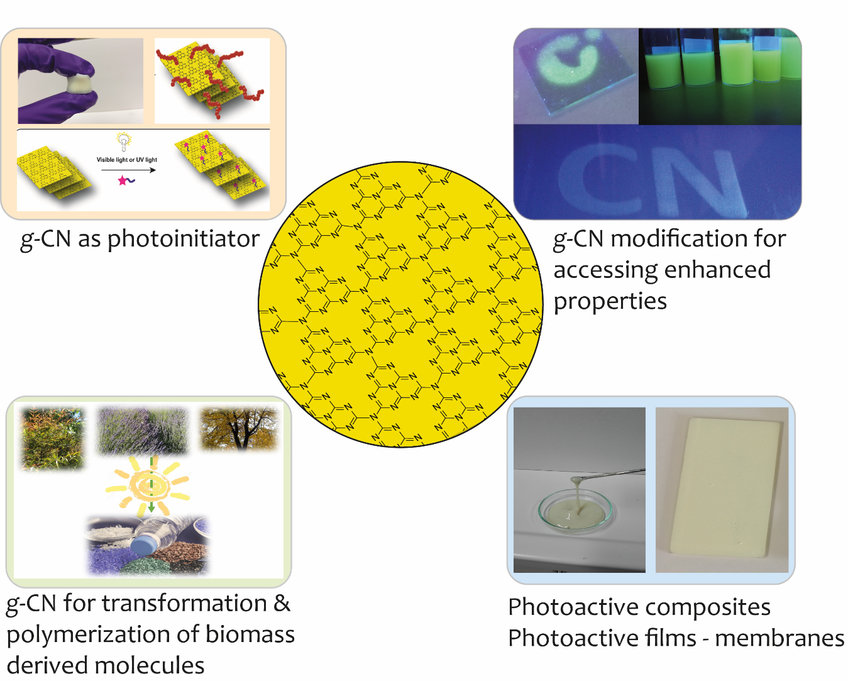
Forschung
Development of humankind has always been related to the materials which we are able to process, i.e. techniques on steel (steel age) provided us industrialization and vehicles. Now, we are at the so-called ‘silicon age’, where our technology relies on tailoring semiconductors, polymers and polymer composites. While there are wide class of semiconductors, such as Si, TiO2, CdS or perovskites, they have drawbacks from sustainability perspective: rare-earth metal contents, toxicity, limited adjustability, high prices and reaching maximum efficiency. Graphitic carbon nitride (g-CN) is a metal free semiconductor which can be synthesized from low-cost, nitrogen-rich and abundant precursors. Furthermore, it has tunable properties (band-gap, absorption, photoluminescence, surface area, crystallinity) via pre- or post-modifications, therefore g-CN represents a large class of materials unlike other semiconductors. Solid-state thermal polymerization (around 500°C) of such precursors yield g-CN powders (with strong π-π interactions granting graphite-like stacking with slight negative surface charge). As a hot research topic, g-CN class has been utilized as visible light induced heterogeneous photocatalyst in diversified applications such as water splitting, CO2 reduction, pollutant degradation and in selective organic reactions.
Compared to conventional semiconductors, g-CN has some serious drawbacks, mainly processability. Our aim is to overcome such problems by combining g-CN with polymer and colloid chemistry, in order to fabricate polymer composites, biomass conversion, energy devices, photoactive materials, novel photocatalytic reactions, soft materials and developing techniques for processing g-CN in aqueous and organic dispersions (coating or even printing). Most importantly, we want to achieve all these by applying cheap, light induced, accessible, non-toxic, scalable and easy chemistry which can be conducted anywhere in the world (maybe too futuristic, but why not even in other parts of our solar system?). Therefore, we believe in two main aspects: utilizing light to manufacture novel materials, or fabricating materials aiming the utilization of light for environmental issues.